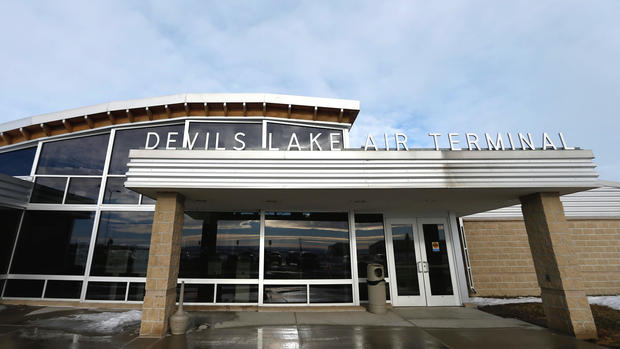Essential Air Service Subsidies Are Hugely Wasteful and Trump Is Right to Cut Them

The Devils Lake Airport terminal was rebuilt nearly 10 years ago. photo by Eric Hylden/Grand Forks Herald
President Donald Trump’s proposed budget is causing quite a stir in political circles. Locally one cut the President proposes has our state’s congressional delegation seeing red.
Particularly Democratic Senator Heidi Heitkamp:
BISMARCK, N.D. (AP) — U.S. Sen. Heidi Heitkamp says President Donald Trump’s call to eliminate subsidized air service to rural communities could hurt three North Dakota cities.
The North Dakota Democrat says the Essential Air Service program makes affordable air travel available in Dickinson, Devils Lake and Jamestown.
This is absolute bunk. The EAS Program is a tragically wasteful, often subsidizing airlines to fly mostly-empty flights at a cost to taxpayers of thousands of dollars each.
There are three communities in North Dakota which receive EAS subsidies: Devils Lake, Jamestown, and Dickinson.
As an example of how wasteful these subsidies are, here’s an excerpt from the most recently completed EAS agreement for Devils Lake:
This agreement required 1,121 flights per year (that’s 22 one-way flights over 52 weeks with a 98 percent expected completion rate). In calendar year 2015 the Devils Lake Airport saw 5,104 boardings, so we’re talking about an average of about 4.5 passengers per flight that year on a 50-seat regional jet which cost the taxpayers $2,877 per flight (nearly $640 per passenger) or $5,754 per round trip.
Here’s the same excerpt from the most recently completed EAS agreement for Jamestown:
According to the Jamestown airport’s website, they had 8,642 boardings in 2015. That’s a slightly better per-flight passenger average of 7.7, but still an abysmal number when we’re talking about 50-seat jets.
The per-passenger subsidy for Jamestown that year was $362. The per-flight-subsidy was $2,789.
It would be cheaper for the taxpayers to buy these air passengers bus tickets to places like Grand Forks or Fargo to catch a flight.
That would probably waste less fuel too.
Dickinson lost their EAS subsidies during the oil boom which caused a spike in demand for air travel to that community, but they got a new contract in 2016. It hasn’t been completed yet so I don’t have good, recent data for that city, but according to the DOT the contract was worth over $4.1 million.
Why anyone would defend these subsidies is beyond me. They’re hugely wasteful in every sense of the term. They’re billed as providing necessary services to rural communities, but in reality this is a cake baked for the airline industry.






